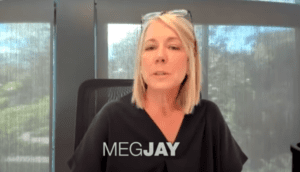As global economic conditions continue to change, it is important that we stay on top of what is happening around us today to prepare for the future. Studies have been carried out identifying three pivotal trends that are redefining our economies and societies: deglobalization, decarbonization, and demographics.
A New Economic Climate
Dubbed “The 3D Reset”, the outlook on the future takes us to a place where we have been before, hence “reset”. The new economic climate is expected to see inflation remain high, mandating more stringent economic policies. While central banks have managed to slow down the rise in prices temporarily, this has disrupted the balance between growing the economy and keeping prices stable. What this may lead to are deliberate measures to slow down economic growth to lower inflation.
What are the 3Ds?
Taken together, the 3Ds are working together to create this new economic climate. Understanding the causes can help investors better understand how their investments could be affected and how to respond to such changes.
– Demographics: The workforce shortages witnessed after the pandemic are pushing labor costs upward. This is clear in the disparity between job vacancies and available workforce, which can suggest an upcoming rise in wages. Basically, higher wages mean higher costs for businesses, which means inflated prices for consumers.
– Deglobalization: The strains in international relations, particularly the West’s with China and the fallout of the Russia-Ukraine conflict, have driven inflation higher and affected supply chains due to an over-reliance on imports. To overcome this, firms are rethinking their production strategies and moving them closer to home. Some companies are focusing more on producing and purchasing goods locally instead of globally, which also contributes to the increase of prices.
– Decarbonization: Despite the benefits of a shift towards sustainable energy, this transition can also drive inflation. Phasing out carbon-based energy sources and replacing them with alternatives will initially be costly, again making energy prices go up.
What does this mean for investors?
Studies show that this could indicate interest rates will remain high. Should interest rates stay high, investors should expect to prepare for more volatility. The US Federal Reserve is likely to focus on controlling inflation, prioritizing that over stimulating growth. This means they are less likely to cut interest rates or inject more money into the economy as they have before, because those actions could make inflation worse.
So, how can investors prepare for the reset?
– Diversify: Avoid putting all your eggs in one basket. Invest in multiple asset classes and different industries and countries, to help protect the total value of your investments.
– Think Long-Term: A long-term diversified investment approach removes the need to change your investment strategy based on current or expected market conditions.
– Tune out the noise: Stick to your investment plan and focus on making investment decisions based on your objectives, not emotions.
While the situation continues to transform, these basic investment principles remain important. By understanding these shifts and how to respond to them, investors can strategically position themselves to benefit from this evolving economic landscape.



